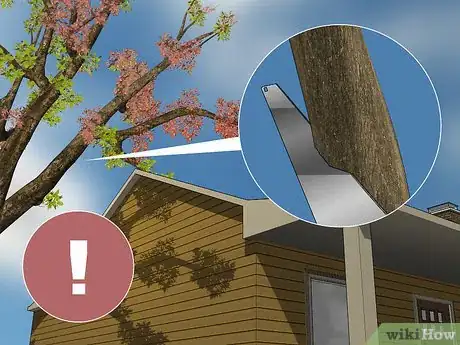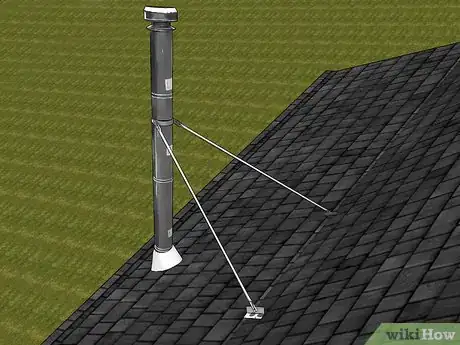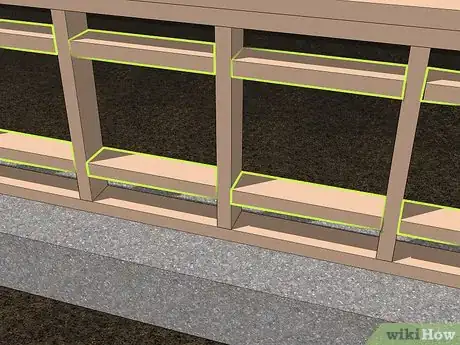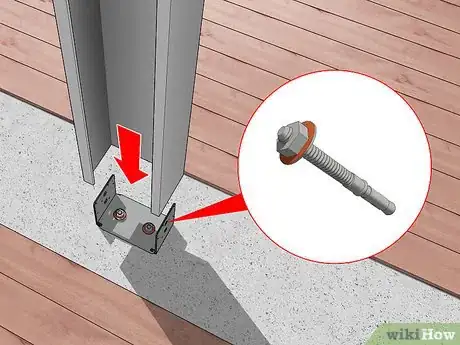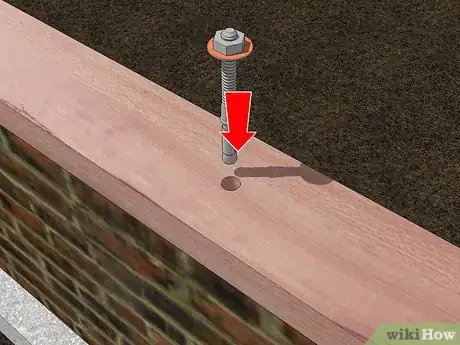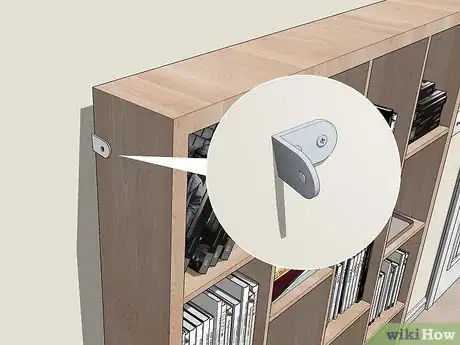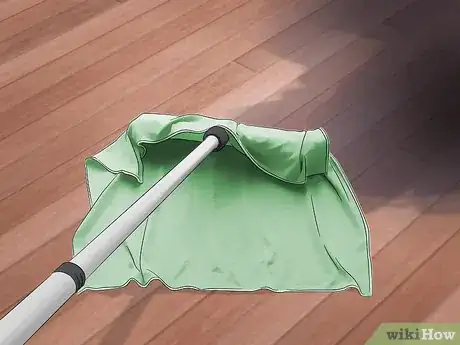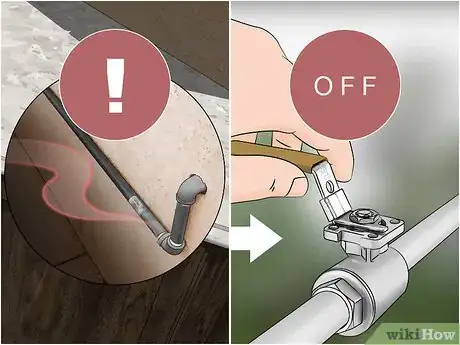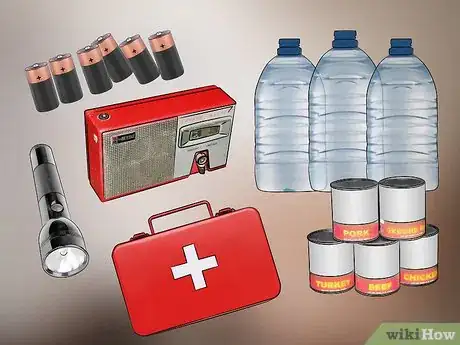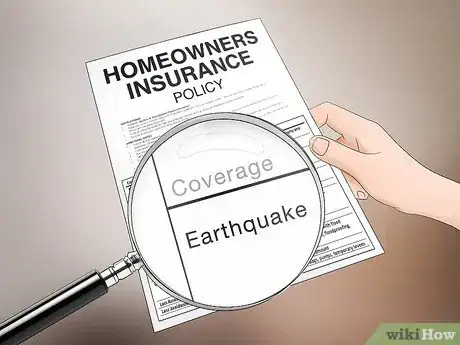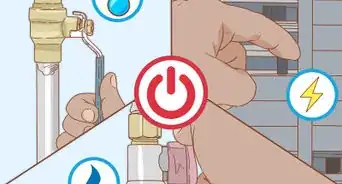This article was co-authored by wikiHow Staff. Our trained team of editors and researchers validate articles for accuracy and comprehensiveness. wikiHow's Content Management Team carefully monitors the work from our editorial staff to ensure that each article is backed by trusted research and meets our high quality standards.
This article has been viewed 73,731 times.
Learn more...
An earthquake occurs when there is a sudden release of energy between two plates in the Earth's crust, creating seismic waves. An earthquake has 4 different types of boundaries so it creates different scales of damage from an earthquakes. Some can cause tsunami and some can cause things as simple as pans clattering to your house floor. As a result of earthquakes, damage to land, buildings, and homes can also occur. Although earthquakes cannot be avoided, the damage they leave in their wake can be reduced drastically. In order to achieve this, the right precautions must be taken.
Steps
Preventing Damage to Your Home
-
1Evaluate elements outside the home that are potential hazards. Trees that are old or leaning, electrical wires, and power lines can be detrimental to the infrastructure of your home during earthquakes. The way to counter potential damage is to reinforce structures.[1]
- For power lines and potential electric wires that might fall and cause damage, reinforce foundations and ceilings with concrete and plywood sheathing respectively to brace your house for falling objects.
- Consider removing or cutting down trees that could fall onto the home. Reinforcing your home with concrete for its foundation and plywood sheathing for your ceiling will help protect it, but so will ridding the surrounding area of things that could potentially fall and cause the damage you're bracing it for.
-
2Make any necessary repairs to your home. Look at walls, your chimney, foundation, and roof tiles to inspect them for any potential weaknesses. If you find that they have some, make those repairs before disaster strikes to prepare yourself for potential earthquake damage.[2]
- Use additional plywood sheathing underneath chimneys to reinforce ceilings and prevent bricks and/or mortar from falling through the ceiling.
- Fix roof tiles that are loose and anchor heavy roofing material properly on a roof frame to ensure the roof is strongly braced.
- Add braces to chimneys to prevent it from falling over. Make sure that they are steel collar braces.
Advertisement -
3Add support to cripple walls. Earthquakes can potentially shift cripple walls, so bracing them is necessary to support the floor and exterior walls of the home.[3] Add 2x4 boards between vertical studs at the top and bottom of a cripple wall to brace it securely against the foundation.
-
4
-
5Anchor sill plates properly to the foundation. Sill plates are the horizontal part of the wall that vertical architecture like walls is built on. It acts as a layer between the wall and the house's foundation. If they aren't bolted down, an earthquake can make the sill plates shift.[6]
- Bolts need to be long enough to penetrate through the plate and several inches of foundation every six feet along the exterior walls.
- Hire a professional contractor to do this work for you, as it is extensive and must be done correctly.
-
6Install windows with round corners. Traditional, rectangular window frames are more susceptible to having their corners cracked and chipped as a result of pressure from the earthquake shifting the frames. Windows can be preserved if you round out the corners instead of using the default angled corners most windows come with.[7]
-
7Restrain large equipment, furniture pieces, and appliances. Secure wall hangings, bookshelves, computers, and entertainment centers with flexible fasteners. Have your refrigerator and your hot water heated bolted down to prevent gas lines from breaking if the quake causes them to fall over.[8]
Reviewing Damage After the Earthquake
-
1Inspect the home for any apparent structural damage. If there are any structures that look unsafe, evacuate the home. If there is just a lot of debris and shifted furniture, make sure you are wearing shoes as you look around and assess the damage the earthquake has done.
- Watch out for any downed wires. Do not touch wires or objects that risk potential harm.
-
2Clean up spills from drugs, medicines, and other potentially dangerous materials immediately. However, be careful of cleaning up chemical spillage because mixing the wrong chemicals might have adverse effects. If you are unsure about whether or not it's safe to clean up, open windows or a door to provide ventilation.
-
3Check your utilities and turn off any damaged utilities.[9] Gas is harder to turn off. Take two bricks and crank the lever 90 degrees to the left. That turns it off. For electricity, just flip the main switch on the breaker box off. That turns all the electricity in your house off.
- Once you are sure there are no fires in your house turn the water off.
- Plug all water sources. Water pipes may become damaged and water might come out your drains and flood your house.
- Call the fire department or electric company to have your utilities turned back on once a thorough inspection has been conducted.
Preparing for an Earthquake
-
1Create an emergency plan. An emergency plan covers what to do in the case of an earthquake and lets you be aware of which areas of your home are dangerous and which areas you should stay away from. Make sure that every member of your household knows the emergency plan in the case of an evacuation route.[10]
-
2Put together an emergency supply kit. Keep it somewhere safe and easily accessible. Ideally, an emergency kit should include enough essentials that could last at least 72 hours. Within the supply kit, some of the basics include one gallon of water per person per day, non-perishable food items, a NOAA Weather radio, a battery-powered radio, a first aid kit, flashlight, extra batteries, etc.[11]
-
3Know how to shut off your home's utilities in case of an emergency. Knowing where to go to cut off the water main, gas, and electric is important, especially if a leak occurs due to damage from an earthquake. Every household member needs to know how to turn off the utilities to protect the home and the people in it.[12]
-
4Review your homeowner's insurance policy periodically. You want to be sure that in the case of an earthquake disaster striking, you have the exact coverage you need to rebuild and/or add repairs to your home if damage incurs.[13] If you live an area that is prone to earthquakes, consider purchasing earthquake insurance.
Community Q&A
-
QuestionHow do you protect your home from an earthquake?
 Community AnswerA major part of protecting your home against earthquakes is reinforcing the framework of the house. Brace cripple walls, bolt down your home to the foundation, reinforce chimneys, etc. Inside of the home, you should bolt down heavy equipment like water heaters, fridges, and entertainment centers, among other things.
Community AnswerA major part of protecting your home against earthquakes is reinforcing the framework of the house. Brace cripple walls, bolt down your home to the foundation, reinforce chimneys, etc. Inside of the home, you should bolt down heavy equipment like water heaters, fridges, and entertainment centers, among other things. -
QuestionWhat should you do before an earthquake?
 Community AnswerYou should develop an emergency plan, stock on an emergency supplies, and make any repairs or renovations that will improve the security of the structure of your home.
Community AnswerYou should develop an emergency plan, stock on an emergency supplies, and make any repairs or renovations that will improve the security of the structure of your home. -
QuestionWhat are managing agencies for earthquake?
 Community AnswerFEMA, Federal Emergency Management Agency, is the managing agency for earthquakes.
Community AnswerFEMA, Federal Emergency Management Agency, is the managing agency for earthquakes.
References
- ↑ http://earthquakescanada.nrcan.gc.ca/info-gen/prepare-preparer/eqresist-en.php
- ↑ http://www.rbcinsurance.com/homeinsurance/preventing-earthquake-damage.html
- ↑ https://www.angieslist.com/articles/6-tips-prevent-earthquake-damage.htm
- ↑ https://www.angieslist.com/articles/6-tips-prevent-earthquake-damage.htm
- ↑ http://earthquakescanada.nrcan.gc.ca/info-gen/prepare-preparer/eqresist-en.php
- ↑ https://www.angieslist.com/articles/6-tips-prevent-earthquake-damage.htm
- ↑ https://www.angieslist.com/articles/6-tips-prevent-earthquake-damage.htm
- ↑ http://www.rbcinsurance.com/homeinsurance/preventing-earthquake-damage.html
- ↑ http://www.disastersrus.org/emtools/earthquakes/earthquake.pdf
